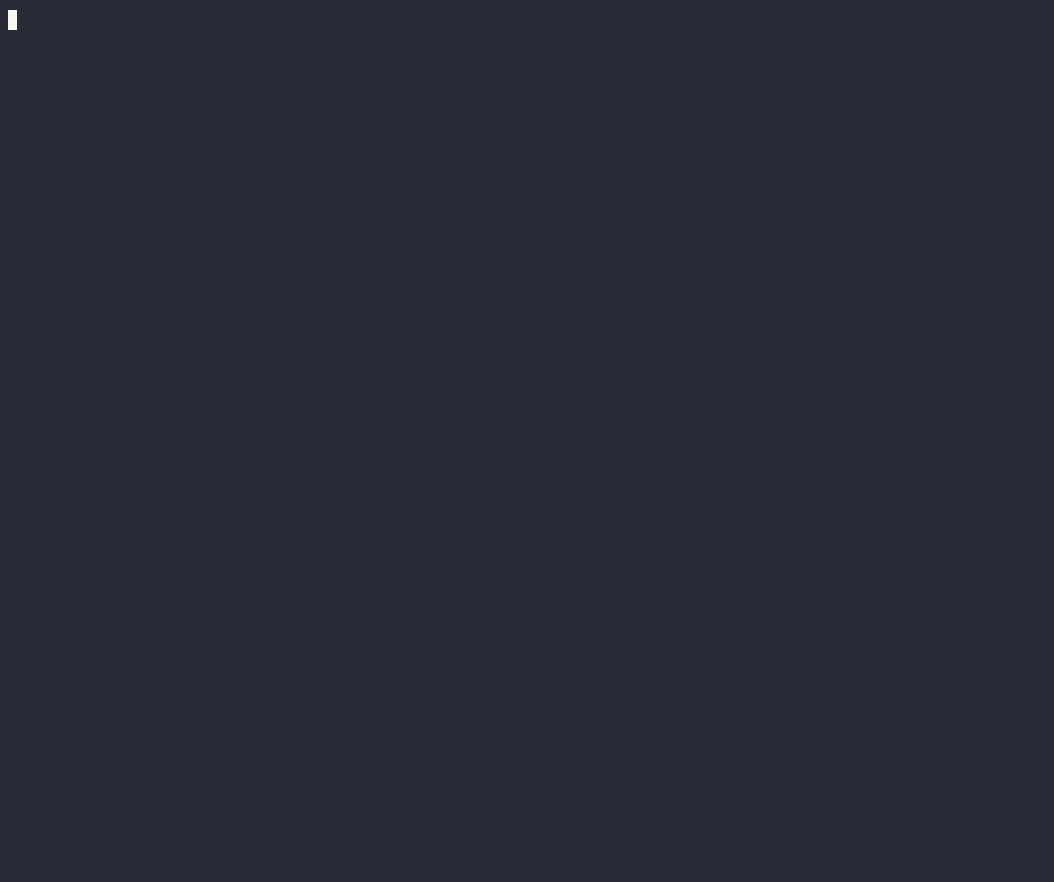Posts
4983Following
329Followers
494OpenPGP: 3AB05486C7752FE1
Jarkko Sakkinen
jarkkoA new asymmetric key type tpm2_key_rsa: https://git.kernel.org/pub/scm/linux/kernel/git/jarkko/linux-tpmdd.git/log/?h=tpm2_key
Missing still integration to the pre-existing ASN.1 parser but can already sign with the null seed (default if parent is not defined).
I though this would be most logical way to define asymmetric key. Later on tpm2_key_ecdsa can be added. Also for RSA we should use TPM2_RSA_Decrypt for decryption and signing, whereas ECDSA requires potentially more expensive TPM2_Sign and TPM2_EncryptDecrypt.
It is still experimental. Testing the key type itself without parser first with the help of null seed, and then adding bits to call the ASN.1 parser by implementing asymmetric_key_parser. This derived work from James Prestwood’s earlier work from 2020.
Jarkko Sakkinen
jarkkonever happens anywhere else (tested e.g. with Sublime Text with NeoVintageous).
Jarkko Sakkinen
jarkkoJarkko Sakkinen
jarkkoJarkko Sakkinen
jarkkoSo soon available in linux-next...
Jarkko Sakkinen
jarkkohttps://lore.kernel.org/linux-integrity/20240518113424.13486-1-jarkko@kernel.org/T/#u
Jarkko Sakkinen
jarkkoJarkko Sakkinen
jarkkoJarkko Sakkinen
jarkkoukify build --linux=images/bzImage --initrd=images/roofs.cpio
Or along the lines.
I.e use Unified Kernel Image (UKI) in kernel testing.
#linux #kernel
Jarkko Sakkinen
jarkkoJarkko Sakkinen
jarkkoThe easiest way to move forward with a feature is not to have best possible code quality (at least when tagged as RFC). Instead, having a provable payload for the feature is essential.
https://lore.kernel.org/all/D1BC3VWXKTNC.2DB9JIIDOFIOQ@kernel.org/
Jarkko Sakkinen
jarkkoJarkko Sakkinen
jarkkoJarkko Sakkinen
jarkko@ohmrun I wrote this 2D maze in Haskell circa 2011 (not likely to compile today):
module Maze where
import Control.Monad
import Foreign
import qualified Graphics.UI.SDL as SDL
import System.Random
import Data.List
import Data.Array
data Cell = Cell {
top :: Bool,
left :: Bool,
visited :: Bool
} deriving (Show, Eq)
type Maze = Array (Int, Int) Cell
newCell = Cell {top = True, left = True, visited = False}
newMaze :: Int -> Int -> Maze
newMaze rows columns = listArray ((0, 0), (rows - 1, columns - 1)) (repeat newCell)
genMaze maze (r, c) (seed:seeds)
| visited (maze ! (r, c)) == True = maze
| otherwise = foldl traverse maze' ((permutations neighbours) !! index)
where maze' = maze//[((r, c), (maze ! (r, c)) { visited = True })]
locs = [(r - 1, c), (r + 1, c), (r, c - 1), (r, c + 1)]
((_, _), (rmax, cmax)) = (bounds maze)
neighbours = [(r', c') | (r', c') <- locs,
r' >= 0 && r' <= rmax, c' >= 0 && c' <= cmax]
index = seed `mod` (length neighbours)
moveTo maze (r, c) (r', c')
| visited cell' = maze
| r' < r = maze//[((r, c), cell { top = False })]
| r' > r = maze//[((r', c'), cell' { top = False })]
| c' < c = maze//[((r, c), cell { left = False })]
| c' > c = maze//[((r', c'), cell' { left = False })]
| otherwise = error "Invalid move"
where cell = maze ! (r, c)
cell' = maze ! (r', c')
traverse maze' (r', c') = genMaze (moveTo maze' (r, c) (r', c')) (r', c') seeds
hline :: Int -> Int -> Int -> SDL.Pixel -> SDL.Surface -> IO ()
hline x y width (SDL.Pixel pixel) screen = do
screenWidth <- return (SDL.surfaceGetWidth screen)
pixels <- castPtr `liftM` SDL.surfaceGetPixels screen
forM_ [0..(width - 1)] $ \dx -> do
pokeElemOff pixels (y * screenWidth + x + dx) pixel
vline :: Int -> Int -> Int -> SDL.Pixel -> SDL.Surface -> IO ()
vline x y height (SDL.Pixel pixel) screen = do
screenWidth <- return (SDL.surfaceGetWidth screen)
pixels <- castPtr `liftM` SDL.surfaceGetPixels screen
forM_ [0..(height - 1)] $ \dy -> do
pokeElemOff pixels ((y + dy) * screenWidth + x) pixel
main :: IO()
main = do
startRow <- randomRIO (0 :: Int, rows - 1)
startColumn <- randomRIO (0 :: Int, columns - 1)
seeds <- replicateM (rows * columns) (randomRIO (0 :: Int, (max rows columns)))
maze <- return (genMaze (newMaze rows columns) (startRow, startColumn) seeds)
SDL.init [SDL.InitEverything]
screen <- SDL.setVideoMode screenWidth screenHeight 32 []
hline 0 0 screenWidth whitePixel screen
hline 0 (screenHeight - 1) screenWidth whitePixel screen
vline 0 0 screenHeight whitePixel screen
vline (screenWidth - 1) 0 screenHeight whitePixel screen
forM (assocs maze) $ \((r, c), cell) ->
if (top cell) then do
hline (blockWidth * c) (blockHeight * r) blockWidth whitePixel screen
else do return ()
forM (assocs maze) $ \((r, c), cell) ->
if (left cell) then do
vline (blockWidth * c) (blockHeight * r) blockHeight whitePixel screen
else do return ()
SDL.flip screen
eventLoop
SDL.quit
where
eventLoop = SDL.waitEvent >>= checkEvent
checkEvent SDL.Quit = return()
checkEvent (SDL.KeyUp _) = return()
checkEvent _ = eventLoop
blockWidth = 32
blockHeight = 32
rows = 16
columns = 16
screenWidth = columns * blockWidth
screenHeight = rows * blockHeight
whitePixel = SDL.Pixel 0x00FFFFFF
Ur welcome ;-)
